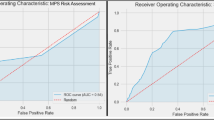Abstract
This paper presents development work on a new approach for predicting the human response to an emergency situation. The study builds upon an initial investigation in which 20 participants were asked to predict what actions they would take in the event of a domestic fire [1]. The development work involved a retest with an additional 20 participants to investigate the reliability of the approach. Furthermore, the analysis procedure was improved such that the results represented more accurately those which could be obtained from practical application of the approach. As found in the initial investigation, the frequencies and sequences of the reported acts had significant relationships with a study of behavior in real fires [2] (Spearman’s rho: 0.323, N=55, p<0.05) and (Spearman’s rho: 0.340, N=37, p<0.05), respectively. Further development work is required, but the results indicate that the approach may have use for predicting human behavior in emergencies.
Chapter PDF
Similar content being viewed by others
References
Lawson, G., Sharples, S., Cobb, S., Clarke, D.: Predicting the Human Response to an Emergency. In: Bust, P.D. (ed.) Contemporary Ergonomics. Taylor and Francis, London (accepted for publication) (in press)
Canter, D., Breaux, J., Sime, J.: Domestic, Multiple Occupancy, and Hospital Fires. In: Canter, D. (ed.) Fires and Human Behaviour, pp. 117–136. John Wiley and Sons, New York (1980)
Laughery, R.: Simulation and Modelling as a Tool for Analysing Human Performance. In: Wilson, J.R., Corlett, N. (eds.) Evaluation of Human Work, 3rd edn., pp. 219–238. Taylor and Francis, London (2005)
Hamilton, W.I., Clarke, T.: Driver Performance Modelling and its Practical Application to Railway Safety. Applied Ergonomics 36, 661–670 (2005)
DiFac IST5-035079, http://difac.net
Lawson, G., D’Cruz, M., Bourguignon, D., Pentenrieder, K.: Training in the Digital Factory. In: The IFAC Workshop on Manufacturing, Modelling, Management and Control, Budapest (2007)
Purser, D.A., Bensilum, M.: Quantification of Behaviour for Engineering Design Standards and Escape Time Calculations. Safety Science 38, 157–182 (2001)
Brooks, C.J., Muir, H.C., Gibbs, P.N.G.: The Basis for the Development of a Fuselage Evacuation Time for a Ditched Helicopter. Aviation, Space and Environmental Medicine 72, 553–561 (2001)
Deere, S.J., Galea, E.R., Lawrence, P.J.: A Systematic Methodology to Assess the Impact of Human Factors in Ship Design. Applied Mathematical Modelling 33, 867–883 (2009)
Dane, F.C.: Research Methods. Brooks/Cole Publishing Co., Belmont (1990)
Silverman, B.G., Johns, M., Cornwell, J., O’Brien, K.: Human Behavior Models for Agents in Simulators and Games: Part I – Enabling Science with PMFserv. Presence: Teleoperators and Virtual Environments, 139—162 (2006)
Kirwan, B., Ainsworth, L.K.: A Guide to Task Analysis. Taylor and Francis, London (1992)
Bakeman, R., Gottman, J.M.: Observing Interaction: An Introduction to Sequential Analysis. Cambridge University Press, Cambridge (1986)
Wilson, J.R.: Methods in the Understanding of Human Factors. In: Wilson, J.R., Corlett, N. (eds.) Evaluation of Human Work, 3rd edn., pp. 1–31. Taylor and Francis, London (2005)
Author information
Authors and Affiliations
Editor information
Editors and Affiliations
Rights and permissions
Copyright information
© 2009 Springer-Verlag Berlin Heidelberg
About this paper
Cite this paper
Lawson, G., Sharples, S., Clarke, D., Cobb, S. (2009). Development of a Technique for Predicting the Human Response to an Emergency Situation. In: Harris, D. (eds) Engineering Psychology and Cognitive Ergonomics. EPCE 2009. Lecture Notes in Computer Science(), vol 5639. Springer, Berlin, Heidelberg. https://doi.org/10.1007/978-3-642-02728-4_3
Download citation
DOI: https://doi.org/10.1007/978-3-642-02728-4_3
Publisher Name: Springer, Berlin, Heidelberg
Print ISBN: 978-3-642-02727-7
Online ISBN: 978-3-642-02728-4
eBook Packages: Computer ScienceComputer Science (R0)




